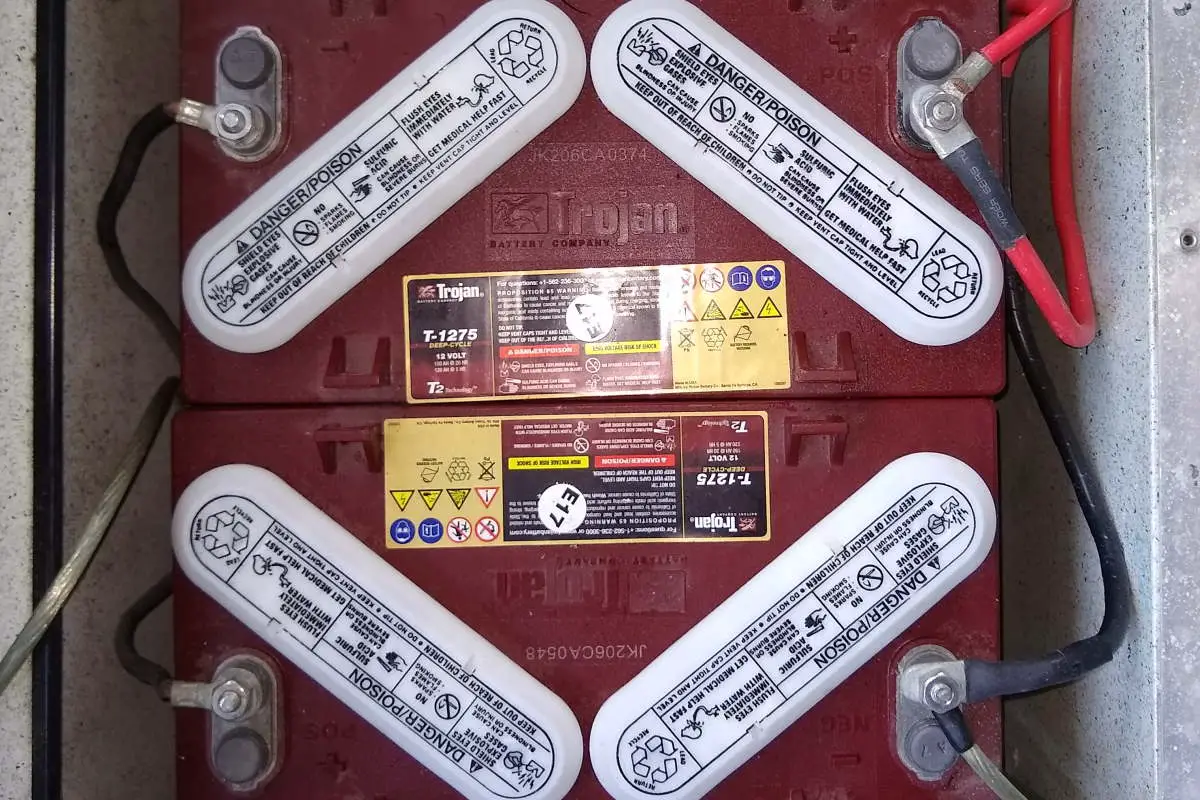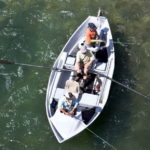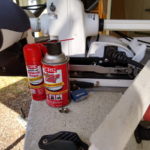A trolling motor is a device that can make your boat more efficient, as it reduces the stress on your main engine, extending its life span. The most common model found in modern fishing boats is a 24V trolling motor. But does it need two batteries?
A 24V trolling motor doesn’t need two batteries because it can function well with one 24V battery. However, 24V batteries are difficult to find, so it is more common to connect two Identical 12-volt batteries in series to the motor to provide the 24 volts needed.
This article will discuss the various types of batteries that work best for a 24V motor. Also, I will describe how to turn 12V batteries into a 24V power supply for your trolling engine.
Can You Run a 24V Trolling Motor System With One 12V Battery?
It is challenging to run a 24V trolling motor with a single 12V battery, but not impossible. Many anglers have tried this and damaged their trolling systems, so for this reason, it is best to utilize a dual battery system.
Suppose you are successful with using one battery. In that case, the trolling motor will only run at half its potential on a single battery. Also, the system will overheat, which reduces the life expectancy of the motor.
Attempting to run your 24V system with a single battery is not recommended, so you should choose two premium 12V batteries for optimal functions.
New 24V lithium batteries are hitting the market every day. These batteries might be a powerful option for isolated systems with separate battery chargers. At this point, it is still more common for two compatible 12V lithium batteries to be used for 24V systems.
Check out our article Q & A on 24 Volt Trolling Motors.
What Type of Batteries Does a 24V Trolling Motor Use?
24V models use two deep cycle batteries, which is an enhanced power system that produces a steady power output over an extended period. Because these batteries dispel a lot of power, they must be charged more frequently than regular devices.
There are three types of batteries you can use for your trolling motor:
- AGM batteries
- Lead-acid wet-cell batteries
- Lithium batteries
AGM and lead-acid batteries are the two models commonly found in a 24V trolling system.
What Are AGM Batteries?
AGM batteries are sealed lead-acid batteries. In contrast to wet-cell models, AGM batteries hold their electrolytes in thin glass fibers, helping them maintain a charge for long periods. Moreover, AGM batteries are:
- Spill-proof
- Protected from vibration damage
- Reliable (the battery lasts for up to four years)
Besides these advantages, AGM batteries require no maintenance because you do not need to add distilled water. Most fluid stays inside the battery’s chambers because it is sealed(VRLA), preventing evaporation.
A disadvantage of AGM batteries is their cost, as they are more expensive than wet-cell designs but cheaper than their lithium counterparts. Choosing AGM batteries is not the most affordable option, but it is ideal for improved trolling system productivity and industry standards.
What Are Lead-Acid Wet-Cell Batteries?
Lead-acid wet-cell batteries are similar to AGM batteries because they both use sulfuric acid for energy. In contrast to the AGM designs, wet-cell batteries will last a max of two years and are the least expensive option for trolling batteries.
Wet-cell batteries use a mixture of sulfuric acid and water. The downside of their design is that the water level evaporates during each charge, so owners must continuously add water to maintain wet-cell models.
Besides being high maintenance, wet-cell batteries are also:
- Prone to vibrational damage
- Susceptible to spillage
- Easily damaged. When the water levels get too low, the life span of the battery is shortened.
What Are Lithium Batteries?
Lithium batteries are the newest models used for 24V trolling systems. Battery manufacturers say that they are superior in energy provision to the lead-acid wet-cell and AGM batteries.
Comparatively, these batteries can last longer and have a higher mileage output than others and are the lightest option available so that they won’t weigh down your boat. Additional advantages of lithium batteries include:
- Fast charging
- Zero maintenance
- Weather-resistant
- Heat endurance
- Non-hazardous
- Enhanced shelf life (Lithium batteries last twice as long as AGM batteries)
The most significant disadvantage is that lithium batteries are costly. The average cost of a 12V lithium battery is five times the price of an AGM battery, so if you have a larger budget, this might be a better battery choice for you.
Can You Use Regular Car Batteries for a 24V Trolling Motor?
You cannot use anything but a deep-cycle battery for your 24V trolling motor. Deep-cycle battery models are engineered to discharge 50% and then recharged for the subsequent use of the trolling device.
In contrast, a regular battery provides a large burst of power to start an engine but not enough to supply continual usage. Also, these batteries cannot be cycled, which is a crucial requirement of trolling motors. Even if you successfully run a trolling motor with a non-marine battery, you will damage the battery beyond repair.
You may want to avoid using other types of batteries to preserve the longevity of your trolling motor from damage by irregular voltage.
How To Choose the Right Battery for Your Trolling Motor?
As mentioned, the standard voltage for each battery is 12V. Before using these batteries for your motor, test them with a voltmeter to confirm that they are working correctly. The voltmeter should give you a resting voltage of approximately 12.8V. Some specifications are best suited for trolling motors that some batteries cannot provide, so make sure that the voltage and amp hour rating suit the requirements for your device.
The amp-hour rating should be at least 100 amp-hours, but you can purchase batteries with a larger rating. More amp hours equal more time fishing. The batteries you choose should be identical in their specifications. If they are not similar, there is a higher chance of:
- Short battery life
- Power failures
- Acid leaks
- Damage to the trolling system
The main issue with non-matching batteries is shorter battery life, and when batteries are expensive, this is important. An old battery almost always draws down the new battery. The new battery will bear more of the load and age faster until it is equal in performance with the old battery.
Once you’ve found identical 12V batteries, join them in a series to power your 24V system.
How To Turn two 12V Batteries Into a 24V Power Supply?
To turn two 12V batteries into a 24V power supply, you need a connecting wire. Once you find an appropriate connecting wire, follow these steps to create a battery series:

- Use the connecting wire to link the first battery’s positive terminal to the negative terminal of the second battery.
- Add the positive lead from the trolling motor to the positive terminal of the second battery. Don’t forget to include the fuse or breaker in this connection.
- Connect the negative lead of the trolling motor to the negative terminal of the first battery.
Afterward, both batteries will produce ample voltage for your trolling motor.
How To Charge the Batteries in Your 24V Trolling System?
If you have a 24V charger, you can charge the batteries by connecting your charger in the same way you connected your trolling motor. If you have a multi-bank battery charger, you will connect each battery to a set of wires.
The red wire goes to the positive battery terminal, and the black goes to the negative battery terminal. These chargers will work without disassembling the series wiring connection.
Always disconnect the trolling motor before turning on your charger. Most people have a battery switch or a trolling motor plug for easy disconnect. The batteries will be fully charged After a few hours, depending on the size of your charger.
Alternatively, if you only have a 12V charger, you must disconnect and charge the batteries individually.
How Long Does a 24V Trolling Motor Battery Last?
There are two factors to consider to determine how many hours your battery will last, Battery amp-hours and trolling motor amp draw. For a quick estimate, divide your total battery amp-hour rating by your trolling motor’s maximum amp draw. The result will give you a rough time at about 50% speed on your trolling motor.
Don’t be shocked if this time seems low. Most of the time, you should be using 30% power on your trolling motor or need a bigger trolling motor. For a more detailed answer and equation, check out our article, How do I choose the proper size batteries for my electric trolling motor?
How to Help your 24V Trolling Motor Batteries Last for years?
Maintaining your batteries is very simple and will help them last longer and perform better while on the water. To maintain your batteries:
- Ensure proper water levels if using a wet-cell battery.
- Avoid high voltage charging cycles.
- Charge after every use.
- Always charge your batteries to full power.
- Do not store your batteries in very cold or hot temperatures.
Final Thoughts
Today most fishermen run two 12V AGM 100AH batteries in series for their 24V trolling motors. While it is possible to get a 24V battery, they are not that common. Most trolling motor equipment is designed to work with a two-battery system, including alternator chargers and more.
A 24V motor is the most recommended for its increased reliability and power in your fishing boat. It is a significant upgrade from the 12V motor in control but not as costly as a 36V model, making it perfect for beginners and expert anglers.
This makes for a convincing argument, but check out our article 9 Reasons We Prefer 24 Volt Trolling Motors if you need more.



